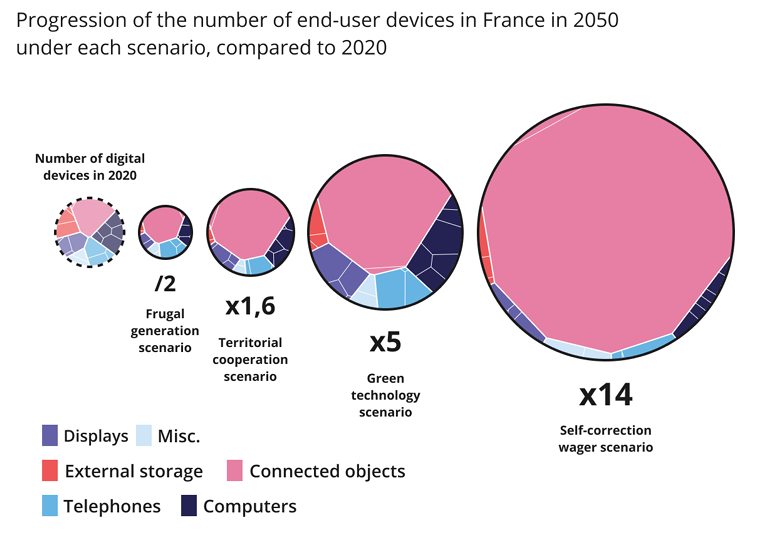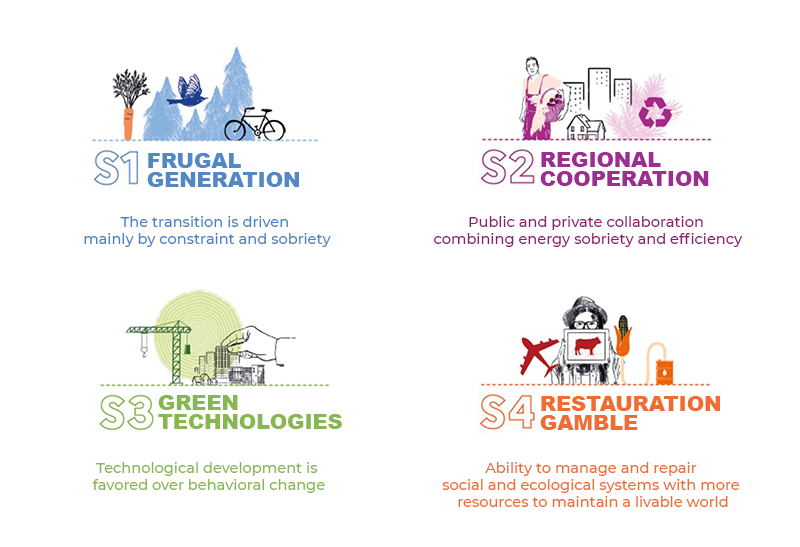16 November 2023
LACROIX
3 minutes de lecture
In a context of ecological transition and volatile energy costs, we need to reduce our overall energy consumption. This also applies to operators and managers of critical infrastructures.
But then, how can digital transformation help operators move towards the energy revolution?
Towards 11 billion digital devices by 2050
11 billion digital devices, including as many connected objects, by 2050: that’s the conclusion reached by ADEME (French agency for the environment and the energy management) and Arcep (France’s Electronic Communications, Postal and Print media distribution Regulatory Authority) in their study on the environmental footprint of digital technology.

Read the ADEME and Arcep study
Based on the 4 scenarios established by ADEME in its “Transition(s) 2050” study, this analysis highlights the evolution of the number of digital terminals present in our society as a function of our lifestyles and behaviors over the long term.
Based on the 4 scenarios established to achieve our carbon neutrality objectives, we note that whatever scenario we follow in the coming decades, the share of connected objects should increase sharply to meet environmental challenges, particularly those linked to energy efficiency.

Find out more about ADEME’s 4 scenarios
We see a correlation between the increase in the number of digital devices in the coming years and the urgent need to reduce our energy consumption.
What role can digital transformation play in our energy transition?
Developing useful, eco-designed technology for the energy transition
At LACROIX, we position ourselves on ADEME scenarios 2 and 3 to meet the challenges of the 21st century.
To do this, we focus on design and manufacture of more sustainable electronic equipment and IoT solutions that save more energy and carbon than it takes to produce them and meet needs that low-tech can’t provide.
Based on current usage and societal issues, we implement effective solutions tailored to our customers’ needs.
Nevertheless, connected objects raise other technological challenges such as connectivity, interoperability protocols, cybersecurity, and efficiency. These challenges require expertise to tackle them properly.
That’s why working collaboratively with all ecosystem stakeholders to identify genuine customer needs is crucial. The objective is to deliver expertise and technological know-how through practical, user-friendly solutions, facilitating the energy transformation of their businesses.
Meet operators' business challenges with digital technology
Water and energy (Smart Grids, HVAC, street lighting) infrastructures are critical to the proper functioning of our society. Nevertheless, these installations are often energy hungry. For example, water services account for around 10% of global energy expenditure.
It is essential to optimize and secure them, to ensure continuous monitoring and optimized service for users.
The integration of digital technologies at the heart of critical infrastructures represents an opportunity to improve the energy efficiency of these facilities.
For water infrastructures, electronic equipment and IoT solutions can, for example, preserve water resources by detecting water leaks, optimize management processes or visualize data in real time to reduce energy consumption and thus smooth decarbonization.
Connect devices: are they any of help in dealing with societal issues?
To find out more, (re)watch the plenary session “Digital transformation for the energy revolution” from the Breton Economic Forum 2023.



